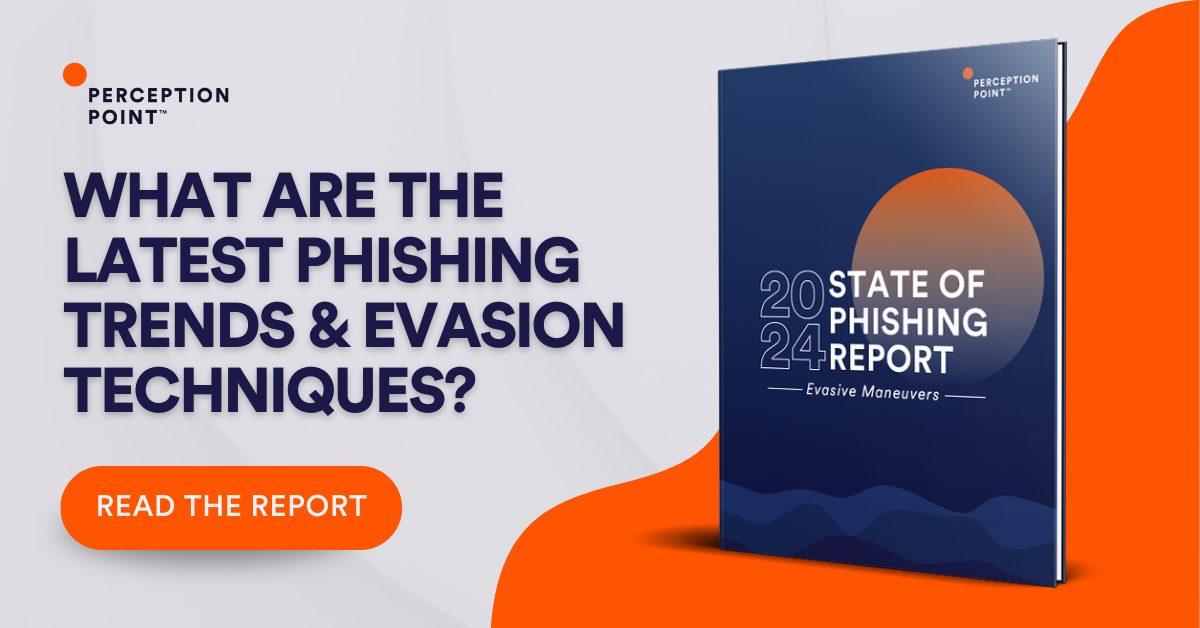What Is Phishing?
Phishing is a type of cyber attack where attackers trick victims into revealing sensitive information such as passwords, credit card numbers, and network credentials. These attacks often occur through deceptive emails, websites, or messages that mimic legitimate organizations or contacts.
The goal of a phishing campaign is to exploit human vulnerabilities and gain unauthorized access to systems and data. It falls under the category of social engineering techniques.
The impact of phishing can range from financial losses to identity theft and significant business disruptions. Victims may face severe repercussions, while the attackers often aim to profit from stolen information or disrupt operations. Awareness and preventative measures are crucial to mitigate the risk from these attacks.
In this article
Types of Phishing Attacks with Real-Life Examples
There are several different types of phishing attacks, which can be demonstrated by a few high-profile incidents.
1. Spear Phishing
Spear phishing targets specific individuals or organizations with tailor-made emails or messages designed to appear as if they come from a trusted source. Unlike generic phishing attempts, spear phishing is highly personalized and often involves gathering information about the target beforehand to increase the probability of a successful attack.
This type of phishing is particularly effective because it leverages the victim’s trust in familiar entities, convincing them to disclose sensitive information or click on malicious links.
One notable incident of spear phishing was the 2016 attack on the Democratic National Committee (DNC) in the United States. Cyber attackers sent spear-phishing emails to members of the DNC, which contained links that led to a fake webmail domain designed to steal credentials, ultimately leading to data breaches involving sensitive internal communications.
2. Whaling
Whaling attacks are a form of phishing targeted at high-profile individuals such as executives, managers, or other key personnel within organizations. These attacks are carefully crafted to look like legitimate critical business emails, often involving legal or financial matters, to deceive the target into performing financial transfers or providing confidential data.
In 2016, several high-profile companies fell victim to sophisticated whaling attacks, where cybercriminals targeted senior employees with deceptive emails to extract sensitive information or manipulate them into transferring funds. At Seagate, the HR department was deceived by an email seemingly from an executive, leading to the release of W-2 forms containing personal and financial details of 10,000 employees.
Snapchat also experienced a breach when its payroll team was fooled by an email from someone impersonating CEO Evan Spiegel, resulting in the unauthorized disclosure of payroll information.
3. Quishing
Quishing, or QR code phishing, is a method where attackers use QR codes to trick victims into revealing sensitive information. These QR codes, when scanned, direct users to malicious websites that mimic legitimate ones. Because QR codes are often trusted and widely used for convenience, victims may not scrutinize the links they lead to as closely as they would with regular URLs.
In 2024, news reports in the United Kingdom warned of a common scam in which fake parking tickets were placed on cars. The tickets included QR codes that directed victims to fraudulent websites. Experts urged drivers to only use approved, trustworthy applications and websites when paying parking tickets.
4. Vishing
Vishing, or voice phishing, involves the use of phone calls to scam the victim into divulging personal, financial, or security information. Attackers often pretend to be representatives from a bank, a government agency, or a trusted company. They typically create a sense of urgency to manipulate victims into quickly transferring money or providing access to bank accounts.
A real-life example of vishing occurred in 2020, when fraudsters impersonating Amazon customer service representatives called customers to verify allegedly suspicious account transactions. They then guided victims to install remote access software supposedly to resolve the issue, which instead gave attackers access to victims’ devices and sensitive information.
5. Smishing
Smishing is a form of phishing conducted via SMS messages. These attacks exploit mobile messaging to trick victims into revealing personal information or downloading malware. Smishing messages often contain a sense of urgency or offer too-good-to-be-true promotions that prompt users to click on malicious links or reply with personal details.
In 2019, a widespread smishing attack targeted Bank of America customers. Cybercriminals sent fraudulent SMS messages claiming there were security issues with their accounts that required immediate attention. The message included a link that directed the recipients to a phishing site designed to mimic the Bank of America login page, tricking customers into entering their online banking credentials.
6. Evil Twin Phishing
Evil twin phishing occurs when a cybercriminal sets up a fraudulent Wi-Fi network that resembles a legitimate public Wi-Fi network, often in crowded public places like cafes, airports, or hotels. Victims connect to the malicious Wi-Fi, believing it to be safe, and expose sensitive information such as login credentials and credit card numbers as they browse the Internet.
In 2020, white hat hackers from the Interior Office of the Inspector General successfully demonstrated the vulnerabilities of the U.S. Department of the Interior’s Wi-Fi networks using evil twin attacks. As part of a penetration testing exercise, the IT audit team constructed homemade hacking kits for less than $200 each, using widely available open-source software.
By setting up fraudulent Wi-Fi networks that mimicked the agency’s official networks, they were able to deceive devices into connecting to these malicious networks. This allowed them to intercept and decrypt network traffic, stealing login credentials and accessing sensitive internal systems.
7. Clone Phishing
Clone phishing involves the attacker creating a nearly identical replica of a previously received email, complete with malicious links or attachments. The email appears to be a resend or update of the original, often claiming that there was an error with the previous link or attachment. It exploits the recipient’s familiarity with the sender, making the email look more credible.
The global retail giant Costco faced such an attack in 2020. Cybercriminals crafted an email that mimicked a genuine communication previously sent by Costco to its customers, promising a special reward or rebate. The cloned email included a malicious link that claimed to lead to the reward redemption page but instead directed unsuspecting recipients to a phishing site.
8. Barrel Phishing
Barrel phishing involves multiple stages. Initially, the attacker sends a benign email to establish trust with the victim. This email usually contains no malicious content and serves to set up the subsequent phishing attempt. After the victim feels secure, a follow-up email is sent with malicious links or attachments.
An example of a barrel phishing attack is an email sent by cyberattackers to a senior corporate employee. The initial email is a friendly message about a potential business opportunity. Once the initial trust is established, a second email followed with a malicious attachment disguised as a project proposal. The victim, believing the communication to be legitimate, opens the attachment, leading to a malware infection.
9. Trap Phishing
Trap phishing involves attackers creating fake accounts or web pages to bait victims into divulging sensitive information. This method often leverages social media or professional networking sites, where attackers pose as legitimate contacts or organizations to gain the victim’s trust.
A common trap phishing scenario includes attackers creating a fake LinkedIn profile of a prominent figure in a specific industry. They then connect with professionals in that field, offering job opportunities or exclusive content. Once the target is engaged, they might be directed to a counterfeit login page or asked to provide confidential information under the guise of a job application process.
10. Domain Spoofing
Domain spoofing involves the creation of a website or email address that looks similar to a legitimate site, often by using slight variations in the domain name, such as common misspellings, similar-looking characters, or different domain extensions. Attackers use these fake domains to deceive people into thinking they are interacting with a trusted entity.
In 2018, a sophisticated domain spoofing attack targeted customers of the popular cryptocurrency exchange, Binance. Cybercriminals created a website that was visually identical to the Binance site, using a domain name that closely resembled the official Binance domain, with the difference being only a slight variation in spelling—a common typographical error that could easily go unnoticed.
This fake site was promoted through phishing emails and social media, tricking users into thinking they were logging into their legitimate Binance accounts. When users entered their login credentials on the spoofed site, their information was captured by the attackers, leading to unauthorized access to their real cryptocurrency accounts.
11. Pharming
Pharming redirects users from legitimate websites to fraudulent ones through the manipulation of DNS settings either on the user’s device or on the DNS server itself. Unlike phishing, which requires tricking the user into clicking a link, pharming can be conducted without any action from the user, making it a particularly dangerous attack method.
In 2017, a pharming attack targeted customers of Wells Fargo. Cybercriminals successfully altered the DNS server settings, redirecting users from the legitimate Wells Fargo banking site to a fraudulent website. As customers attempted to log into what they believed was their secure online banking portal, their login credentials were covertly captured by the attackers.

Tal ZamirCTO, Perception Point
Tal Zamir is a 20-year software industry leader with a track record of solving urgent business challenges by reimagining how technology works.
TIPS FROM THE EXPERTS
- Regularly test for social engineering vulnerabilities. Beyond standard phishing simulations, conduct social engineering tests that mimic sophisticated attacks, such as whaling or spear phishing. This can include phone calls, fake social media profiles, or simulated business requests that go beyond the email vector, helping to identify broader security weaknesses.
- Implement DMARC with strict enforcement. While many organizations use DMARC (Domain-based Message Authentication, Reporting & Conformance), they often fail to enforce it strictly. Ensure DMARC is set to “quarantine” or “reject” unauthorized emails to prevent domain spoofing, a common tactic in phishing attacks.
- Integrate email security with threat intelligence feeds. Enhance your email security systems by integrating them with external threat intelligence feeds. These feeds provide up-to-date information on known phishing domains, IP addresses, and other indicators of compromise (IOCs), enabling proactive blocking of emerging threats.
- Enable strict browser security settings for employees. Enforce strict browser security configurations, such as disabling autofill for passwords and blocking pop-ups. Attackers often exploit browser vulnerabilities in phishing attacks, so limiting these attack vectors can reduce exposure.
- Conduct real-time phishing incident drills. Simulate live phishing attacks and have your incident response team practice real-time mitigation. This helps ensure that your team is prepared to handle an actual phishing incident efficiently, minimizing damage and recovery time.
Strategies for Preventing Phishing Attacks
Here are some of the measures that organizations can take to reduce the risk of phishing attacks.
Educate Employees
Employees trained to recognize phishing attempts are less likely to fall victim and more likely to report suspicious activities. Organizations should conduct regular training sessions that include the latest techniques and provide real-life scenarios that employees might encounter. Continuous updates and reminders about the dangers of unverified links and attachments keep security at the forefront of employees’ minds.
Implement Multi-Factor Authentication
Multi-factor authentication (MFA) adds another layer of security, requiring more than just a password for access to systems. Even if employees are tricked into revealing login details, MFA ensures that attackers cannot gain entry without the additional authentication factor. This method is particularly effective against credential theft stemming from phishing scams.
Use Secure Web Gateways
Secure web gateways (SWGs) are critical in preventing access to malicious websites and filtering out unwanted software. By monitoring and controlling web-based traffic, SWGs help protect against threats before they can enter the network. This technology can block access to known phishing sites and detect new sites that may pose a threat.
Apply Advanced Email Filters
Advanced email filtering solutions can intercept phishing emails before they reach end-users, using techniques like sender authentication and analysis of links or attachments. These filters are constantly updated to recognize current phishing tactics and can quarantine suspicious emails automatically. They are capable of learning and adapting to new phishing trends.
Verify Sources Before Responding
Always verify the authenticity of requests for sensitive information or financial transactions. This simple protocol can stop phishing attacks in their tracks. Encouraging employees to double-check sources via alternative contact methods can help prevent scams where attackers impersonate senior staff or trusted partners.
For example, if an unusual request comes from what seems to be a high-level executive, a quick phone call or direct email to the supposed sender could clarify the situation. But be sure to call the number you have in your records – not the one listed in the email signature.
Use AI-Powered Email Security Solutions
AI-powered email security solutions leverage machine learning to identify phishing tactics that might elude traditional filters. They analyze communication patterns, flagging emails that deviate from the norm. Advanced AI algorithms, in particular large language models (LLMs), can perform real-time analysis of links and attachments and identify even subtle signs of phishing messages created by sophisticated attackers.
Prevent Phishing with Perception Point’s Advanced Email Security
Perception Point uses AI to fight AI to protect the modern workspace across email, browsers, and SaaS apps by uniquely combining an advanced AI-powered threat prevention solution with a managed incident response service. By fusing GenAI technology and human insight, Perception Point protects the productivity tools that matter the most to your business against any cyber threat.
Patented AI-powered detection technology, scale-agnostic dynamic scanning, and multi-layered architecture intercept all social engineering attempts, file & URL-based threats, malicious insiders, and data leaks. Perception Point’s platform is enhanced by cutting-edge LLM models to thwart known and emerging threats.
Reduce resource spend and time needed to secure your users’ email and workspace apps. Our all-included 24/7 Incident Response service, powered by autonomous AI and cybersecurity experts, manages our platform for you. No need to optimize detection, hunt for new threats, remediate incidents, or handle user requests. We do it for you — in record time.
Contact us for more information about how to prevent phishing attacks from reaching your organization.

Phishing is a type of cyber attack where attackers trick victims into revealing sensitive information such as passwords, credit card numbers, and network credentials. These attacks often occur through deceptive emails, websites, or messages that mimic legitimate organizations or contacts.
There are several different types of phishing attacks, including:
1. Spear Phishing
2. Whaling
3. Quishing
4. Vishing
5. Smishing
6. Evil Twin Phishing
7. Clone Phishing
8. Barrel Phishing
9. Trap Phishing
10. Domain Spoofing
11. Pharming
Here are some of the measures that organizations can take to reduce the risk of phishing attacks.
1. Educate Employees
2. Implement Multi-Factor Authentication
3. Use Secure Web Gateways
4. Apply Advanced Email Filters
5. Verify Sources Before Responding
6. Use AI-Powered Email Security Solutions
























